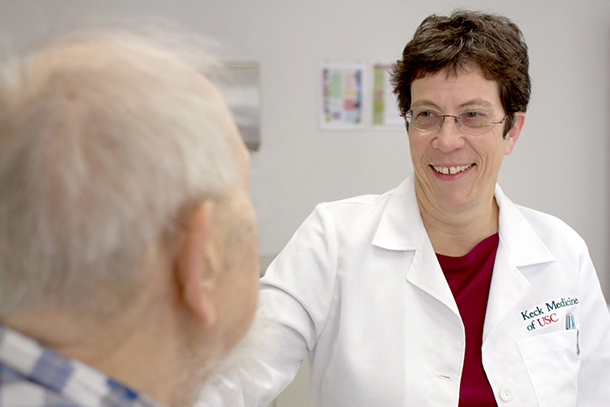An estimated 10 percent of older adults experience some form of abuse each year. However, the link between injuries and possible elder abuse may take months or years to establish and is often difficult to investigate due to poor documentation during prior medical visits.
Geriatric experts now hope to standardize the process of documenting physical injuries on older adult patients and make the medical record more thorough with the creation of the Geriatric Injury Documentation Tool (Geri-IDT). The tool emerged from a new study led by Laura Mosqueda, MD, dean of the Keck School of Medicine of USC and professor of family medicine. The study confirms the need for improved documentation, detailing what experts believe are the most effective factors to achieve it.
Results of the study were presented Feb. 14 in the Journal of General Internal Medicine. The study was informed by interviews with elder abuse experts across the United States, including physicians, detectives and prosecutors, and focus groups with clinicians at emergency medicine and primary care sites.
“Because older adults are more vulnerable to injuries like fractures and bruising, it is often difficult to distinguish if an injury is due to an accident or abuse,” said Mosqueda, who is also director of the National Center on Elder Abuse. “This tool includes diagrams and a brief questionnaire that makes it easier to document an injury and reminds clinicians about what to ask and observe during the exam. We believe this will move us toward more comprehensive injury documentation and ultimately result in better medical care.”
Experts confirmed that current documentation of geriatric injuries is usually inadequate for investigating alleged elder abuse and neglect. As such, they highlighted the need for documenting:
- Patient history, from the perspective of both the patient and another trusted source
- The patient’s physical appearance before clean-up or treatment is initiated
- A head-to-toe evaluation for injuries
- All injuries, including minor ones
- Any evidence that might disprove abuse or neglect (pertinent negatives)
“The need to protect our older loved ones from elder abuse is great,” said Alexis Coulourides Kogan, PhD, assistant professor of family medicine at the Keck School and co-author of the study. “But focusing solely on the reason for a patient’s visit seldom tells the whole story, even when you look at the medical chart. If documentation of physical findings is poor, then we may be missing the big picture.”
Study participants also noted the value of photographs and body diagrams to supplement written documentation, the time challenges of thorough documentation in a busy clinical setting and the need to integrate the tool into existing electronic medical records.
“It may be more work for a clinician to use an injury documentation tool, but we believe the value far surpasses the burden placed on physicians,” Kogan explained. “If there is suspected elder abuse, these records can potentially help prosecutors achieve justice and protection for older adults or exonerate innocent caregivers.”
Next, the researchers plan to seek funding to test the Geriatric Injury Documentation Tool in clinical settings.


